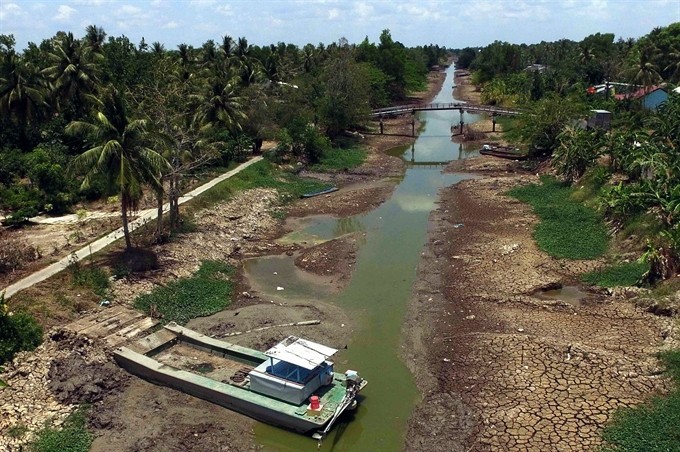Popular Reads
Top Results
Can't find what you're looking for?
View all search resultsPopular Reads
Top Results
Can't find what you're looking for?
View all search resultsNatural disasters could cost Vietnam $6.7 billion
Change text size
Gift Premium Articles
to Anyone
V
ietnam will likely face damages of more than VNĐ141.2 trillion (US$6.7 billion) due to natural disasters such as typhoons, floods or earthquakes in the next 50 years, the World Bank has said.
At a conference on Vietnam’s disaster risk finance held Tuesday, the World Bank evaluated that Vietnam was exposed to many natural hazards, including typhoons, tornadoes and floods. As estimated, about 60 percent of its total land area and 71 percent of its population were at risk of cyclones and floods.
The average economic loss from floods and typhoons was estimated at about 0.8 per cent of the country’s gross domestic product (GDP).
Sebastian Eckardt, lead economist for the World Bank in Vietnam said that the World Bank, together with the Government of Switzerland, supported the country in improving disaster risk finance and insurance solutions through the building of its catastrophe risk model.
The model would help the Government and other organizations evaluate potential losses and better prepare for financial response to the impact of disasters before they occurred, he said.
Measures should be chalked out to protect the State budget against natural disasters and develop insurance markets over domestic catastrophe risk.
Olivier Mahul, program manager of disaster risk financing solutions, said that Vietnam would likely face an average damage to private and public assets of up to VNĐ30.2 trillion per year.
Of which, residential and public assets such as buildings and infrastructure accounted for 65 and 11 per cent of total damage, respectively.
Floods, typhoons and earthquakes would remove $6.7 billion from the country over the next 50 years, he said. The average damage of some certain vulnerable localities could be more than VNĐ1.7 trillion annually. Localities in the north-central region, with a high poverty rate, would be more vulnerable to natural disasters.
Olivier said that the Vietnamese Government had funding sources such as contingency budgets at central and grassroots-levels, State reserves, financial reserve funds, disaster prevention and control funds, and donor grants.
However, the state budget seemed to be the main fund for the job. Other sources such as the disaster prevention and control funds had not been fully put into operation across provinces due to some restrictions.
Risk transfer instruments such as insurance were quite new and remained unpopular, he added.
Lê Thị Thúy Vân, head of the Ministry of Finance’s Market Research Committee said that the state budget could only support a part of the total annual loss.
It could only provide for post-disaster relief and recovery policies. The budget for post-disaster for development capital expenditure remained insufficient.
In the case of more frequent and larger disasters, the state budget could face financial distress both for emergency relief and infrastructure recovery investment, she said.
Van said among financial measures for disaster mitigation, insurance was an effective method to reduce the burden on the State budget. However, she said, the development of natural calamity insurance in the country required short and long-term roadmaps.
At the conference, Olivier Mahul concluded that a specific financial assessment would increase the effectiveness of financial management.
The catastrophe risk model would help inform national financial protection strategy and poverty reduction and social protection strategies, develop the catastrophe risk market and urban planning.
He also noted that the building of a financial protection strategy should be part of a disaster risk management and climate change plan and should complement investment in prevention and risk mitigation.
This article appeared on the Viet Nam News newspaper website, which is a member of Asia News Network and a media partner of The Jakarta Post







